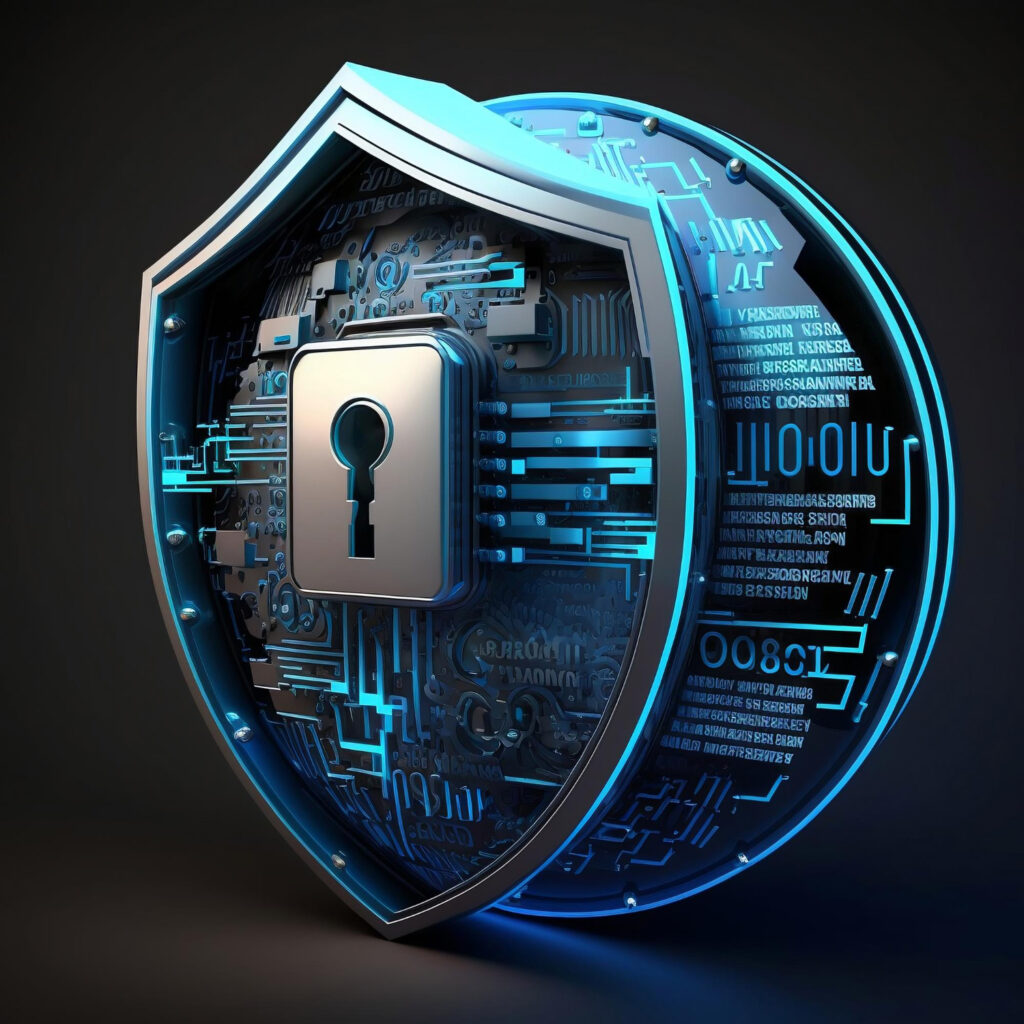Network Security Audit: Types, Benefits & Best Practices

Think your network is safe because no one’s raised an alarm yet? In 2023, the average cost of a data breach touched $4.45 million—often caused by overlooked gaps in basic security.
A network security audit helps uncover those gaps before hackers/ attackers do. It checks your system, policies, and configurations to spot anything that could expose your data. From identifying risks to ensuring compliance and improving overall protection, audits help build a more secure environment.
This guide explains what network security audits are, why they’re important, the different types, and steps on how to conduct a security audit effectively.
What Is A Security Audit?
A security audit is a thorough review of a company’s IT systems to identify vulnerabilities that could lead to cyberattacks. It checks passwords, software, and networking settings to make sure everything is properly secured. These audits help organizations stay compliant with data protection regulations while minimizing the risk of data breaches. By regularly auditing their systems, businesses can protect sensitive information, maintain smooth operations, and avoid costly security incidents. Just like a routine health check-up, security audits catch potential issues early, helping companies stay cyber safe and assuring customers that their data security is being taken seriously.
Learn more about cybersecurity audits for SMBs and why regular reviews are essential
Why Are Network Security Audits Important?

Network security audits play a crucial role in maintaining effective cybersecurity. They help detect security gaps, confirm adherence to regulations, and keep defenses up to date as new threats appear. Here’s how they contribute to protecting today’s businesses:
1. Proactive Threat Mitigation
It may be hard to believe, but cyberattacks occur more frequently than you might realize, with one occurring every 39 seconds. A security audit identifies the vulnerabilities before they are exploited by hackers. It tests for such problems as old software, insecure network settings, or giving employees more access than required. These may seem minor, but they can lead to serious threats. Audits also highlight the risk areas that align with common attack patterns, helping companies stay ahead of potential breaches.
Related Post : Common Network Security Threats Affecting Australian Businesses
2. Use Human Expertise with Advanced Tools
An audit done properly uses both human expertise and automated tools. Software can scan systems continuously and catch obvious issues like weak passwords or unknown devices, but specialists bring deeper insight. They simulate real-world attacks to see how the system holds up, offering a clearer picture of its defenses. This mix of tools and people helps catch risks that one method alone might miss — which matters more than ever as threats grow smarter and harder to detect.
3. Adapt to Infrastructure Changes
Businesses often upgrade their tools, move to the cloud, or add new hardware. Each change brings new risks that may not be obvious at first. Security audits help review the system after any major change, making sure nothing is missed. For example, a firewall could reset to default settings, or an external app could connect without proper security checks. Audits make sure all new pieces fit securely into the existing setup, so gaps don’t go unnoticed.
4. Secure Remote and Hybrid Workforces
Many companies now allow people to work at home or access work on their own device. While this provides flexibility, it also brings new security issues. Personal laptops or phones might lack the same protection as office infrastructure, and public internet connections provide hackers with a simple entry point. Security audits help review how remote work tools are being used, check if devices are managed properly, and confirm whether protections like VPNs and endpoint security tools are working well. This keeps company data safe even outside the office.
5. Future-Proof Against New Cyber Threats
Cyber threats are not only increasing—they’re changing. Hackers now use advanced methods like AI to create smarter attacks. Audits help companies prepare by checking if their current setup meets newer standards and practices. They also match findings with global data on cyber threats to spot anything unusual. Features like multi-factor authentication, limited access, and network segmentation are tested to confirm that the company is ready to handle modern threats—not just the ones from the past.
6. Optimize Security ROI
Security tools can be expensive, and sometimes businesses buy more than they need or don’t use them properly. A security audit reviews all the tools in use and points out overlaps or areas where money is being wasted. This helps the company cut down on unnecessary costs and invest in tools that really help protect their systems.
When Should Security Audits Be Performed?

Network security audits aren’t something you do once and forget. They’re like routine health checkups for your IT setup. If you delay them, small issues can grow into serious security risks. The timing of an audit often depends on how your systems are used, any recent changes, and the kind of data you handle.
Here are the most common situations when running a security audit becomes necessary:
After a cyberattack or attempted breach
If your system has recently faced any kind of cyberattack—successful or not—it’s a clear sign that something needs attention. An audit right after such an incident helps you understand how the attack happened, what part of the system was affected, and how you can fix and strengthen your defenses. It also prevents similar threats from slipping through again.
Before rolling out new systems, software, or tools
Launching a new application, connecting new devices, or moving to the cloud can open doors to unexpected security gaps. Running an audit before or right after introducing new elements helps make sure everything fits well with your existing setup and doesn’t expose your data to risk.
When you make changes to your internal team or access structure
Changes like new hires, role shifts, or employee exits affect who can access what. If access rights aren’t updated or revoked properly, it can create loopholes. A security audit at this stage checks user permissions and helps lock down unnecessary or outdated access.
During regulatory or compliance checks
If your business falls under data protection rules like GDPR, HIPAA, or PCI-DSS, audits are often a part of compliance. Even if they’re not required at the moment, it’s smart to run them ahead of official checks. It saves last-minute stress and helps avoid fines or penalties.
After major infrastructure changes
Upgrading servers, switching vendors, restructuring departments, or expanding your operations? All of these affect your network. Conducting an audit ensures everything is still secure after the change and that your protection systems are keeping up with the growth.
At regular, planned intervals
Even if nothing big has changed, regular audits are good practice. For some businesses, once a year is enough. For others—especially those handling sensitive data—quarterly or even monthly checks make sense. It depends on how large your system is and how much risk you carry
What Are The Different Types Of Security Audits?

Network security audits focus on specific risks, compliance needs, or operational goals. Each type reveals different weaknesses, ensuring organizations strengthen defenses, meet regulatory standards, and improve performance. Below are key audits, their workflows, and real-world applications:
1. Penetration Testing (Ethical Hacking)
This is a hands-on test where cybersecurity professionals act like hackers to try and break into systems. The purpose is to find weak spots before attackers do. It usually includes checking how applications handle user input, how secure the login process is, and whether attackers can move inside the network once they get in. Penetration testing helps identify both known vulnerabilities and mistakes in security practices. It’s often done yearly or after major updates to systems.
2. Configuration Audit
A configuration audit looks at the technical setup of devices across the network. This includes checking how firewalls are configured, whether routers are using strong rules, and if default settings or open ports are left exposed. Even secure devices can become a risk if not set up properly. These audits often flag overlooked issues like disabled logging, weak administrative passwords, and unnecessary services running in the background. Fixing these can significantly reduce attack points.
3. Compliance Audit
This audit checks whether an organization is meeting required security regulations and policies. Industries like healthcare, finance, and e-commerce must follow specific standards such as HIPAA, PCI-DSS, or ISO 27001. A compliance audit reviews how data is accessed, handled, and protected, including encryption methods and internal controls. It also looks at whether proper policies are in place, employees are trained to follow them, and records are maintained correctly. These audits help avoid penalties and build trust with both customers and regulators.
4. Internal Network Audit
This audit focuses on the parts of the network that operate behind the firewall, such as servers, databases, and internal user systems. It checks for outdated software, unapproved changes, poor access control, and signs of unauthorized activity. It also evaluates how well sensitive areas are separated from general access areas. Internal audits limit the probability of insider attacks, unintentional data leakage, and system deceleration due to misconfigurations or unauthorized devices.
5. External Network Audit
Unlike internal audits, this one focuses on what outsiders can see and potentially exploit. It includes scanning public-facing servers, websites, email systems, and any exposed services. The goal is to identify things like open ports, exposed admin panels, and weak encryption. Frequent external audits assist businesses in remaining vigilant about external threats and keeping their internet-facing infrastructure secure.
6. Wireless Security Audit
Wireless networks are often less secure than wired ones, especially if encryption is weak or devices are not monitored. This audit checks Wi-Fi security settings, access point placements, encryption strength, and guest network access. It also reviews whether unauthorized devices are connecting to the network. These audits are especially important in large offices, hotels, or public spaces where Wi-Fi is widely used.
Each audit type serves a specific need, but together, they give a complete view of how secure the network is. Running the right mix of audits regularly helps identify problems early, reduce risk, and keep systems running smoothly and safely
Steps to Perform a Cybersecurity Audit

A network security audit typically follows a structured process that helps identify weak points, validate current security practices, and suggest improvements. Here’s how it’s generally carried out:
Step 1: List All Network Assets
Before anything else, the first step is to create an inventory of all devices and systems connected to the network—servers, routers, switches, endpoints, IoT devices, even virtual machines. Without knowing what’s running, it’s impossible to know what’s at risk.
The audit team usually maps out the network architecture to understand traffic flow, device roles, and how they interact. This also helps spot unknown or unauthorized devices that might have slipped through.
Step 2: Review Security Policies and Controls
Next, the audit team inspects the existing security policies of the company. This includes firewall policies, password management policies, access management, remote access setup, and update timings. The objective is to verify if such policies are defined, enforced in practice, and aligned with best security practices. If policies do exist but aren’t followed or maintained, they’re marked as a concern.
Step 3: Identify and Assess Risks
With the policies and inventory in place, the next thing to do is to discover risks. These may be such things as open ports, outdated software, poor passwords, unused services, or missing patches. The team also considers the amount of harm each threat would be able to inflict if manipulated.
All issues aren’t created equal—some might merely be inefficient, while others will leave the entire network open to a breach.
Step 4: Perform Vulnerability Scans and Testing
After risks have been indicated, vulnerability scans are executed to identify known threats such as exposed ports, default settings, unpatched systems, and so on. Scans are normally automated but then subject to manual verification.If necessary, pen testing is also conducted—this is taking virtual cyberattacks and seeing just how well the network can endure the pressure. It assists with checking everything from the external defense to how successful an attacker can be if he makes it past the defenses.
Step 5: Document Findings and Share Recommendations
Once all tests are complete, the findings are documented in a report. It includes what was reviewed, the risks discovered, how severe they are, and what fixes are recommended. The report is written clearly, often with visuals like network diagrams or severity charts, so that both tech and non-tech teams can understand what actions need to be taken next.
Step 6: Apply Fixes and Plan Regular Reviews
Fixing critical issues is the immediate priority once the audit is over. But equally important is building a schedule for future audits—networks evolve, and so do threats.Most organizations set quarterly or annual audits, depending, depending on how much their systems change or the level of compliance they need to meet.
Benefits of Regular Network Security Audits

Regular network security audits help keep your business safe, save money, and avoid headaches. Here’s how they make a difference:
- Find Hidden Risks Early
Audits show you exactly where your systems are weak—like old software, broken settings, or passwords everyone still uses. Fix these gaps before hackers notice them.
- Follow Industry Rules Without Stress
Avoid fines and legal trouble by making sure your security meets standards (like GDPR or HIPAA). Audits check if you’re encrypting data, controlling access, and reporting issues correctly.
- Stop Attacks Before They Start
Audits test your defenses against common threats—phishing emails, ransomware, or malware. They help you patch holes so hackers can’t sneak in.
- Save Money by Fixing Issues
Cut wasted spending on tools you don’t need (like extra firewalls) or outdated policies. Use that money for things that actually protect your business.
- Stay Ahead of New Threats
Hackers always find new tricks (like AI scams). Audits check if your defenses can handle these new risks, so you’re not caught off guard.
- Avoid Costly Problems
A single breach can shut down operations, cost millions, or ruin customer trust. Audits help you avoid these disasters by fixing problems early.
- Keep Data Safe
Protect customer details, employee records, and company secrets with stronger security—like better passwords, encryption, and access controls.
- Make Future Audits Easier
Stay organized with clear records of past audits. This saves time during investigations or follow-up checks.
Best Practices for Network Security Audits

A strong audit isn’t about checking boxes — it’s about spotting real issues before they turn into bigger problems. Here are five solid practices that help get the most out of every audit.
- Define what’s in and what’s out
Set a clear scope before starting. Whether it’s cloud systems, remote endpoints, or internal databases, knowing what’s being reviewed avoids confusion later and keeps the process focused. - Keep your asset inventory clean and current
Audits rely on up-to-date information. A proper list of devices, users, and tools helps identify what’s vulnerable, what’s outdated, and what shouldn’t even be there. - Use both tools and human checks
Automated scanners are helpful, but they miss things like misconfigured access or poor password practices. Manual review adds context that software alone can’t catch. - Prioritize and act on findings
Not all issues are equally risky. Focus on fixing critical vulnerabilities first—especially the ones that affect sensitive data or can be exploited from the outside. - Don’t wait for things to break
Audits shouldn’t happen only after an incident. Set a schedule—at least once or twice a year—so you can catch problems early and avoid last-minute surprises.
FAQs About Network Security
How much does a Network Security Audit Cost?
Cost of a network security audit will differ according to network size, complexity of assessment, and the firm conducting the audit. While basic audits are likely to cost a few hundred dollars, detailed assessments of large business networks may run into thousands.
Who performs a Network Security Audit?
Network security audits might commonly be handled by security experts, ethical hackers, or third-party companies. Some companies have their own teams, while others prefer to employ external specialists to guarantee an unbiased evaluation.
What should a network security audit report include?
The network security audit report should summarize significant findings, identified vulnerabilities, risk evaluations, compliance status, and recommendations to fix security gaps. Other information may additionally concern security policies, firewall settings, and access control.
Who performs a security audit?
Security audits can either be conducted by IT security teams or independent consultants who specialize in cybersecurity or audit firms that focus on these areas. Internal auditors are found in large organizations; however, small businesses generally engage external experts to analyze their security measures.
Which Tools Are Used in Network Security Audits?
Network security audits use tools like Nessus, Wireshark, Nmap, and Metasploit. Scanners for vulnerability assessment, network traffic analyzers, firewall testing tools, and penetration testing tools all take turns in assessing possible weak points.
Conclusion
Network security audits help businesses stay ahead of cyber threats by identifying vulnerabilities, ensuring compliance, and keeping defenses current. This article discussed what network security audits are, why they matter, the different types, and the best practices to follow. From protecting remote work environments to optimizing security investments, regular audits offer long-term value and clarity into how secure a system really is.
Working with a team like Hyetech can simplify the audit process, making it easier to keep up with security standards, manage risks, and build a stronger, more reliable network infrastructure over time.
